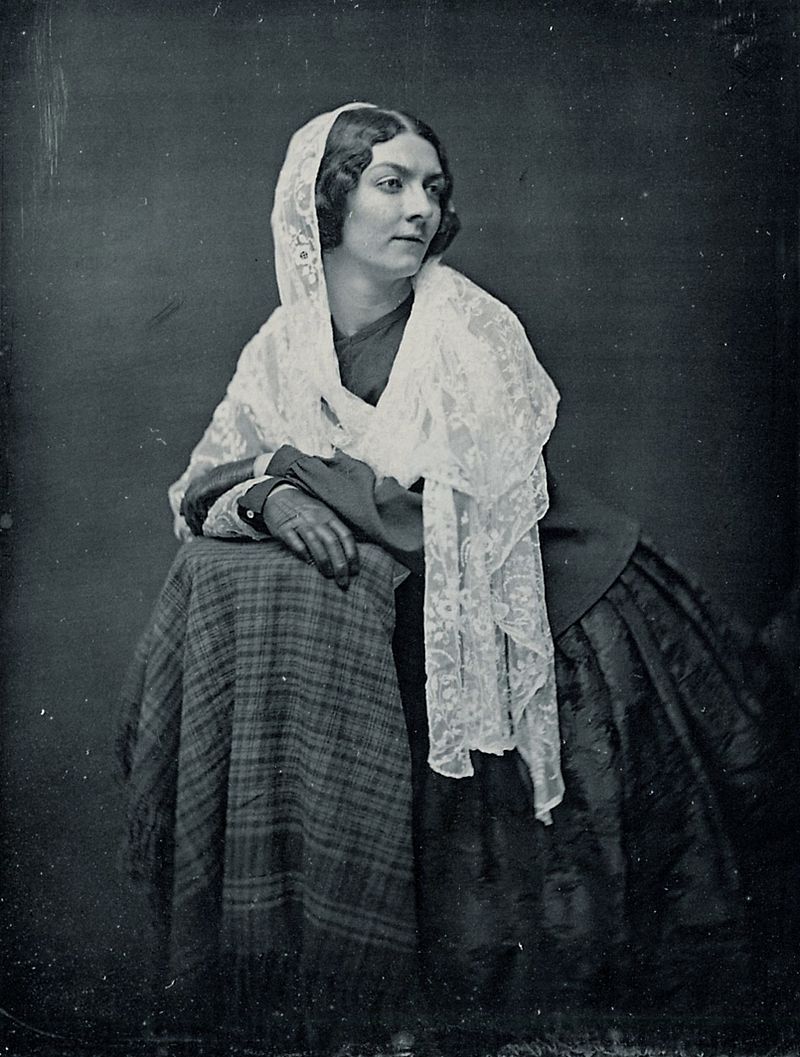
“Lola Montez – 1851” by Southworth & Hawes. From the Wikipedia and in the public domain in the United States because of its age. Original is in the collection of the Metropolitan Museum of Art, New York, USA.
In my post yesterday, I described the singer Lillie Langtry as being the most likely real-life source for Conan Doyle’s Irene Adler. This is indeed the case, and besides it gave me the opportunity to share William Downey’s marvelous portrait of Miss Langtry. There are however two other possible candidates and again we have lovely portraits of them.
The first was Lola Montez, a Irish dancer who became the lover of Ludwig I of Bavaria and came to influence national politics. For Montez we have a lovely 1851 daguerreotype by none other than the great American daguerrotypists Southworth & Hawes.
The other possibility was the singer Ludmilla Stubel, alleged lover and later wife of Archduke Johann Salvator of Austria. There is at least one extant photograph of Ludmilla which can be found at this link. Johann Salvator renounced his titles and in 1889 married Ludmilla “Milli”, who was an opera dancer in London and therefore far below his station. The story sounds a bit like that of Edward VIII and Wallis Simpson. Unfortunately, this couple was doomed. Johann purchased a ship named the Santa Margareta and the two sailed for South America. In February 1890 they set sail from Montevideo, Uruguay, heading for Valparaíso in Chile. They were last seen on 12 July in Cape Tres Puntas, Argentina. It is believed that his ship was lost during a storm off Cape Horn. It wasn’t until 2 February, 1911 that he was officially declared dead.
The story from there follows that of Princes Anastassia of Russia. Following their disappearance there were persistent rumors and “sightings,” stories that they had assumed new identities in South America. In May of 1945 a German born lithographer in Norway, Alexander Hugo Køhler, “confessed” on his deathbed to being Johann Salvator. He claimed that he had bought the real Køhler’s identity and that it was Køhler who had actually died at sea. Heirs of Køhler have yet to be successful in laying claim to Salvator’s fortune, and it would seem a matter for a real life Sherlock Holmes. There is an interesting blog “Beyond the Yella Dog” that in true Holmesian fashion uses photography comparing a photograph of Salvator with one of Køhler. The attachment of the earlobes is just too different. Ultimately, the question can, in fact, be settled by DNA analysi, and in 2007 Køhler’s heirs requested this, but I can find no record of a resolution. If and when that finally happens, it may well be that molecular biology not photography will settle the matter of Salvator once and for all. The matter of Irene Adler however will remain open. This is fitting as she was meant to be a woman of mystery.
